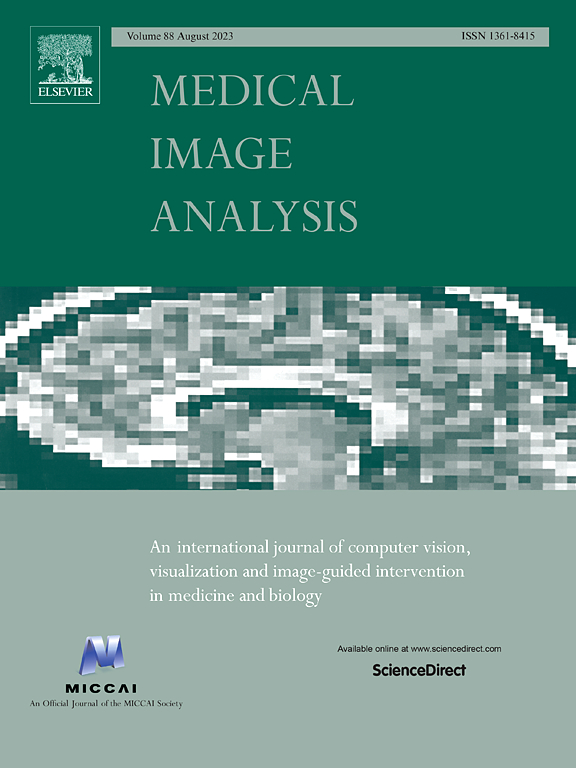Topology-oriented foreground focusing network for semi-supervised coronary artery segmentation
IF 10.7
1区 医学
Q1 COMPUTER SCIENCE, ARTIFICIAL INTELLIGENCE
引用次数: 0
Abstract
Automatic coronary artery (CA) segmentation on coronary-computed tomography angiography (CCTA) images is critical for coronary-related disease diagnosis and pre-operative planning. However, such segmentation remains a challenging task due to the difficulty in maintaining the topological consistency of CA, interference from irrelevant tubular structures, and insufficient labeled data. In this study, we propose a novel semi-supervised topology-oriented foreground focusing network (TOFF-Net) to comprehensively address such challenges. Specifically, we first propose an explicit vascular connectivity preservation (VCP) loss to capture the topological information and effectively strengthen vascular connectivity. Then, we propose an irrelevant vessels removal (IVR) module, which aims to integrate local CA details and global CA distribution, thereby eliminating interference of irrelevant vessels. Moreover, we propose a foreground label migration and focusing (FLMF) module with Pioneer-Imitator learning as a semi-supervised strategy to exploit the unlabeled data. The FLMF can effectively guide the attention of TOFF-Net to the foreground. Extensive results on our in-house dataset and two public datasets demonstrate that our TOFF-Net achieves state-of-the-art CA segmentation performance with high topological consistency and few false-positive irrelevant tubular structures. The results also reveal that our TOFF-Net presents considerable potential for parsing other types of vessels.
求助全文
约1分钟内获得全文
求助全文
来源期刊

Medical image analysis
工程技术-工程:生物医学
CiteScore
22.10
自引率
6.40%
发文量
309
审稿时长
6.6 months
期刊介绍:
Medical Image Analysis serves as a platform for sharing new research findings in the realm of medical and biological image analysis, with a focus on applications of computer vision, virtual reality, and robotics to biomedical imaging challenges. The journal prioritizes the publication of high-quality, original papers contributing to the fundamental science of processing, analyzing, and utilizing medical and biological images. It welcomes approaches utilizing biomedical image datasets across all spatial scales, from molecular/cellular imaging to tissue/organ imaging.
 求助内容:
求助内容: 应助结果提醒方式:
应助结果提醒方式:


